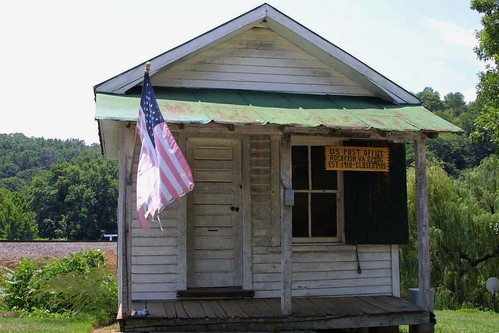USPS’s SatCom
Today, Verizon Business announced it has signed a new contract with the U.S. Postal Service to provide a satellite data and voice services for about 5,000 sites "where wireline or wireless access is unavailable or too costly."
The network, formally known as a VSAT (very small aperture terminal) satellite system, will provide point-to-point communications for about 5,000 Postal Service sites in the continental United States, Hawaii, Alaska and Puerto Rico, and backup connectivity for a number of larger USPS sites. In addition, Verizon Business will provide more than 20 mobile satellite communications kits for the U.S. Postal Inspection Service’s incident response vehicles. Verizon Business is providing the service in conjunction with Spacenet, a satellite network services company.
Verizon Business is deploying the Postal Service’s satellite network under a new two-year contract valued at $25 million and known as ORB-IT (outerspace radio broadcast information technology). The contract also has an option for three two-year extensions.
"Verizon Business continues to work with the Postal Service to provide communications and network services to help it move the mail and process packages more efficiently and cost effectively," said Susan Zeleniak, vice president for Verizon Federal, an organization within Verizon Business dedicated to serving federal government customers. "Verizon Business has earned its position as one of the top communications providers to the federal government by working closely with government agencies to plan and execute effective strategies to help keep their operations running smoothly in the face of changing conditions – either manmade or natural."
Verizon Business and Spacenet will provide both full-time broadband satellite data services as well as on-demand connectivity for on-the-go communications. The network will provide high-performance converged communications capabilities including simultaneous support for high-quality voice, video and broadband data.
The network will support a wide range of customer applications including video relay service (VRS) for deaf and hard-of-hearing USPS employees, multicast file delivery, real-time video broadcasting, routine data transport, and voice-over-Internet-protocol (VoIP) services. This new satellite network will provide primary connectivity for smaller, more rural USPS facilities that have a limited support staff. As the Postal Services rolls out new applications – and eventually point-of-sale (POS) terminals in areas where POS is not currently available – the new VSAT service can easily scale to meet the demands for more bandwidth.
In addition to expanding rural connectivity, mobile VSAT kits will be positioned around the country for immediate deployment to sites that lose their standard wired or wireless connection.
This isn’t USPS’s first use of backup satellite deployments using Verizon (formerly MCI). The relationship actually goes back to 1997, when a plan was established to set-up 7,000 VSAT units by 1999 using Spacenet and MCI. This was a good move, as the 9/11 attacks tested USPS’s backup capabilites:
Using VSATs as a backup for terrestrial systems is a proven and reliable solution. Nowhere was this truer than the September 11 2001 attack on the world trade centers in New York. The USPS offices in New York went almost immediately back on line after USPS pointed its existing VSAT network towards New York. When frame relay went down, a satellite connection took over.
While FedEx and UPS are usually ahead of the technology curve on most fronts, this Verizon announcement is just one more improvement in USPS’s already effective emergency communications strategy. Again, this proved true on 9/11:
Bob Otto, vice president of IT at the U.S. Postal Service (USPS) in Washington, says he could see the smoke from his office after the aircraft struck the Pentagon on Sept. 11. "We then evacuated our computer center of our Washington facility and set it up for remote management from our Raleigh [N.C.] disaster center and immediately instructed our data centers in California and Minnesota to begin backing up to Raleigh," Otto says.
Then Otto’s group learned that the New York attacks had knocked out the frame-relay links connecting facilities in New York to the postal service’s wide-area network. So the USPS pointed its VSAT satellite system toward New York, and the city’s post offices were almost immediately back on the network.
It was all part of the plan, says Larry Wills, manager of distributed computing for the USPS. While frame-relay land lines are the primary network connection to thousands of post offices across the U.S., the USPS has 11,000 VSAT installations nationwide, Wills says. The VSAT services are provided by SpaceNet Inc. in McLean, Va.
Generally, the switch-over is automatic: When frame relay goes down, a satellite connection takes over. Wills says post offices generally don’t even know when it has happened.
